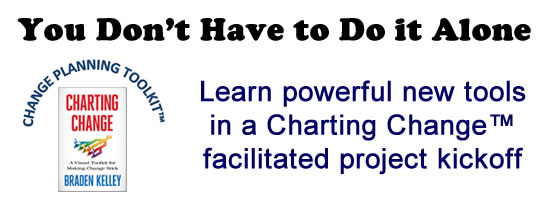3-Point Strategy for Drawing People In

Aristotle maintained that “all men by nature desire to know.†He was referring to human curiosity. Samuel Johnson called curiosity “the first passion and last.†Why? Because curiosity seeks what is different, without regard for whether or not it’s of benefit. Tell someone not to do something, and it creates an instant temptation to do whatever they’re being asked not to: Eve eating the apple, Pandora opening the box, and of course the infamous cat killed by curiosity.
When William James published The Principles of Psychology in 1890 he detailed two different forms of curiosity. The first form is an emotional and instinctive response: anytime you see something new, out of the ordinary, or unusual, your attention is aroused. He called the second form “scientific curiosity.†He described it as the brain’s response “to an inconsistency or a gap in its knowledge.â€
The question is, how can we use curiosity to build interest and engagement in our products and services?
Several years ago marketing researchers Dilip Soman and Satya Menon sought to answer that very question, in the context of how to get people to click on an online ad. Soman and Menon wanted to explore two crucial issues: first, how advertisers of new products and services can overcome the difficulty of motivating people to learn about radically new and thus unfamiliar features and benefits; second, how Internet advertisers can get Web shoppers to actively acquire product information.
The pair hoped to find that the power of curiosity can be harnessed in specific ways to design an effective advertising strategy. They constructed three different ads for a fictitious new digital product— which they called the Sony QV—and documented how consumers responded to each. They designed all three ads with the same headline and visual treatment but gave each a different knowledge gap: narrow, medium, and wide. The narrow-gap ad clearly revealed that the Sony QV was a digital camera and gave details galore on many of the features. The medium-gap ad provided a clue that the Sony QV was a camera, but withheld any further details. The wide-gap ad gave no clues or information whatsoever beyond the QV being a new Sony product.
Which ad do you think generated twice as much interest as the others? The medium-gap ad that provided a clue that the product was a camera. The “Goldilocks” ad.
Soman and Menon concluded that while some information is needed to draw people in, if you give too many details and specifics they turn their attention elsewhere. They offered up a three-point strategy for the best way to stimulate interest:
- Arouse curiosity by demonstrating a moderate gap in the observer’s knowledge.
- Provide just enough information to make them want to resolve their curiosity.
- Give them time to try to resolve their curiosity on their own.
The strategy works for one scientific reason: the brain, like nature itself detests a vacuum, a gap. A broken pattern produces that gap, and when the break is made in a dramatic way, we take notice. When something is suddenly different, and in particular missing, two things happen.
First, we are taken by surprise. For example, a decade ago, when the audience at Macworld 2007 viewed the Apple iPhone for the first time, they were completely caught off guard. The mental model of what a cellphone is supposed to look like was turned upside down.
The second thing that happens is that we try to fill in the gap, connect the dots, and resolve our curiosity. Perhaps Apple knew that because for the six months between MacWorld 2007 and the iPhone on-sale date six months later in June the only information you could find was the late Steve Jobs’s demonstration and a bit of information on the Apple website. There was no marketing hype. No clever advertising. No PR blitz. No planned information leaks to entice the media. No appearances by Mr. Jobs on television. No sweeping demo model program for technology journalists. No advance reviews. No evangelistic outreach to the Apple cult.
In other words, just enough information and time was given to tantalize viewers and future iPhone buyers to want to resolve their curiosity. By the time the iPhone finally went on sale nearly twenty million Americans had expressed interest in buying one.
It seems that Soman and Menon’s 3-point strategy has scientific validity: if you want someone’s attention, pique their curiosity by giving just a taste of information, leaving the rest to the imagination.
Wait! Before you go…
Choose how you want the latest innovation content delivered to you:
- Daily — RSS Feed — Email — Twitter — Facebook — Linkedin Today
- Weekly — Email Newsletter — Free Magazine — Linkedin Group
 Matthew E. May is the author, most recently, of Winning the Brain Game: Fixing the 7 Fatal Flaws of Thinking.
Matthew E. May is the author, most recently, of Winning the Brain Game: Fixing the 7 Fatal Flaws of Thinking.
NEVER MISS ANOTHER NEWSLETTER!
LATEST BLOGS
Followup – Motoring Innovation
I came across an interesting article today on stackable cars that is a good followup to my article about vehicle…
Read MoreProjecting the Future
I’ve been hearing for a while now about the big bulb projector being on its way out soon, which will…
Read More



